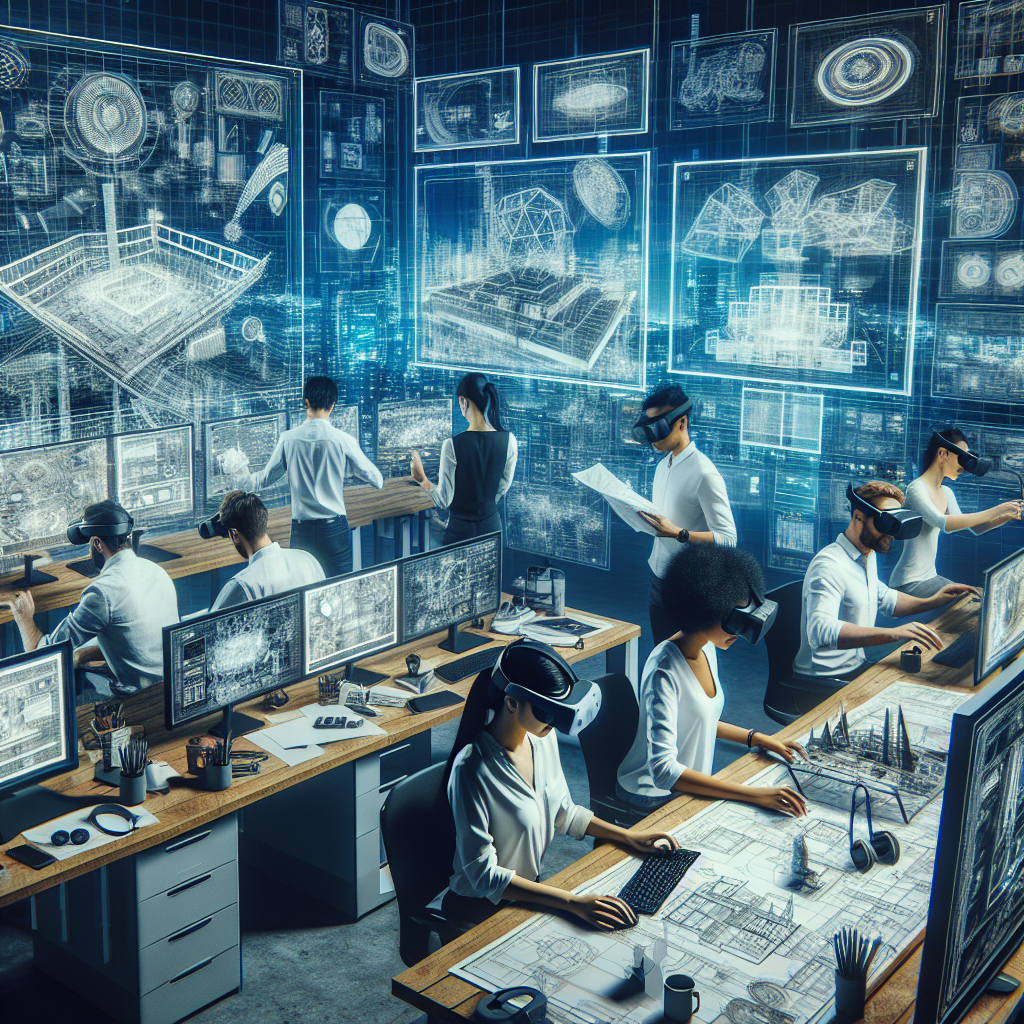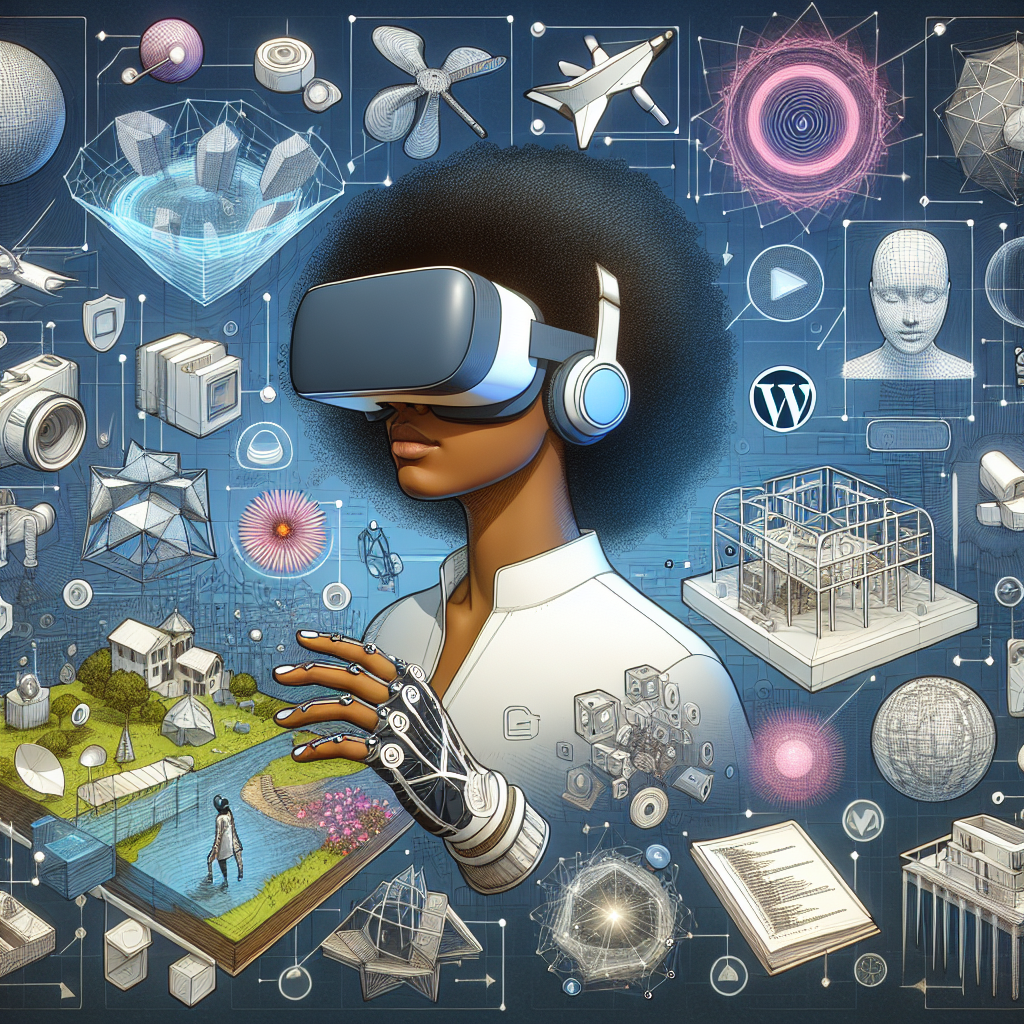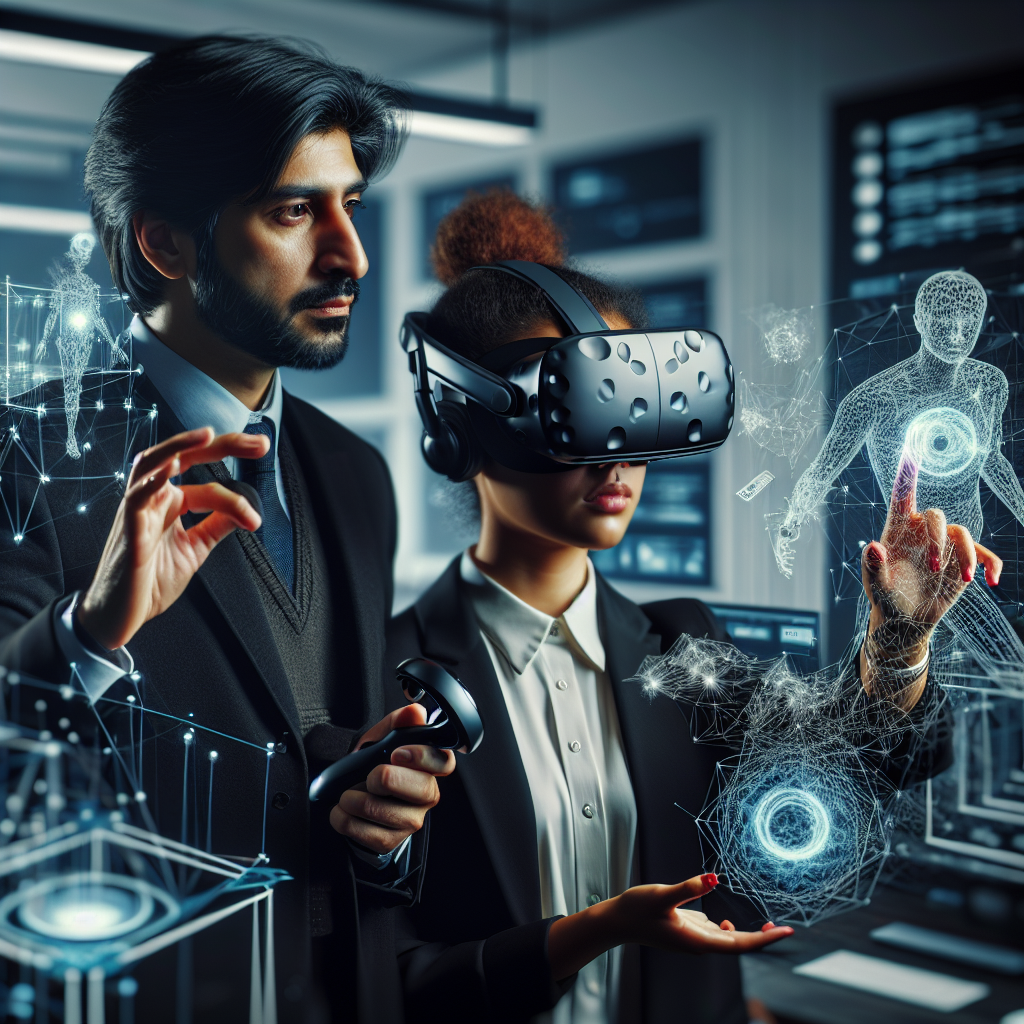Virtual Reality Experience Design is a cutting-edge field that merges high speed internet and technology with creativity to transport users into immersive digital worlds. This innovative discipline focuses on creating captivating and unforgettable virtual experiences that engage all of the senses. From designing realistic environments to implementing interactive elements, every detail is meticulously crafted to provide users with an unparalleled sense of presence and immersion. As technology continues to advance, the possibilities of Virtual Reality Experience Design are limitless, offering a new frontier for storytelling, education, entertainment, and more. Join us as we explore the intricacies of this exciting and dynamic field.
Understanding Virtual Reality Experience Design

Virtual reality experience design refers to the specialized process of creating immersive and interactive virtual environments that users can explore and engage with. It involves the strategic combination of technology, psychology, and design principles to craft compelling experiences that feel realistic and engaging to the user. In essence, virtual reality experience design aims to transport individuals into a digital world where they can interact with objects, environments, and other users as if they were physically present.
Definition of Virtual Reality Experience Design
Virtual reality experience design encompasses the planning, creation, and implementation of virtual environments that users can experience through a headset or other immersive technology. It involves the careful consideration of factors such as spatial awareness, user interface design, interaction mechanics, and sensory feedback to ensure that the experience is seamless and enjoyable for the user. Designers must take into account the limitations of the technology, user comfort, and the overall narrative or purpose of the virtual environment.
Importance of User Experience in Virtual Reality
User experience (UX) is paramount in virtual reality design as it directly impacts how users perceive and interact with the digital environment. A well-crafted user experience can enhance immersion, engagement, and overall satisfaction, while a poor user experience can lead to discomfort, disorientation, and disengagement. Designers must prioritize user testing, feedback, and iteration to continuously improve the virtual reality experience and address any pain points or usability issues that may arise.
Key Elements of Virtual Reality Experience Design
- Spatial Design: The layout, scale, and proportions of the virtual environment significantly impact the user’s sense of presence and immersion.
- Interaction Design: The way users can interact with objects, navigate the environment, and communicate with others shapes their overall experience.
- Visual Aesthetics: High-quality graphics, realistic textures, lighting effects, and animations contribute to the visual appeal and realism of the virtual environment.
- Audio Design: Sound effects, spatial audio, and ambient noise play a crucial role in creating an immersive and engaging auditory experience for users.
- User Interface: Intuitive controls, clear navigation cues, and informative feedback are essential for guiding users through the virtual environment and enhancing their overall experience.

Principles of Virtual Reality Experience Design
Immersion
- Creating a Sense of Presence
- Immersion in virtual reality experience design is intricately linked to the ability to make users feel like they are truly present in a digital environment.
- This involves engaging multiple sensory modalities to trick the brain into perceiving the virtual world as real.
- Techniques such as realistic graphics, responsive haptic feedback, and intuitive user interfaces all contribute to enhancing the sense of presence.
- Importance of Realistic Interactions
- Realistic interactions play a pivotal role in sustaining immersion within a virtual environment.
- Users expect objects to behave naturally and respond to their actions in a way that mirrors real-world physics.
- Designers must meticulously program interactions to be intuitive, seamless, and consistent to uphold the illusion of reality.
- Utilizing 3D Spatial Audio for Enhanced Immersion
- Sound is a powerful tool in enhancing immersion as it provides crucial cues for spatial awareness.
- 3D spatial audio technology enables designers to simulate realistic soundscapes that dynamically change based on the user’s position and orientation.
- By integrating spatial audio cues with visual and haptic feedback, designers can create a fully immersive sensory experience that captivates users’ attention and deepens their engagement with the virtual world.
Interaction Design
Interaction design in virtual reality experience design plays a crucial role in shaping users’ engagement and immersion within the virtual environment. It involves creating interfaces that are not only visually appealing but also highly intuitive and responsive to user input. Here are some key aspects to consider in interaction design:
- Designing intuitive user interfaces: Virtual reality experiences should strive to minimize the learning curve for users when navigating through menus, selecting options, or interacting with objects. This requires a thoughtful arrangement of elements within the virtual space and clear visual cues to guide users.
- Incorporating natural gestures and movements: Leveraging the capabilities of motion tracking technology, designers can create experiences that allow users to interact with the virtual world using natural gestures and movements. This enhances the sense of presence and agency, making the experience more immersive and engaging.
- Balancing user control with guidance: While giving users a high degree of control over their actions is important for fostering a sense of agency, providing subtle guidance can help prevent users from feeling overwhelmed or lost. Designers must strike a balance between empowering users to explore freely and offering gentle nudges in the right direction when necessary.
Visual Design
- Importance of High-Quality Graphics
High-quality graphics are essential in virtual reality experience design as they directly impact the user’s immersion and overall experience. Detailed textures, realistic lighting effects, and smooth animations all contribute to creating a more believable and engaging virtual environment.
- Choosing the Right Color Schemes for Virtual Environments
Selecting appropriate color schemes is crucial for setting the mood and tone of the virtual environment. Colors can influence emotions and perceptions, so designers must carefully consider the psychological effects of different hues when creating VR experiences. For example, warm colors like red and orange may evoke feelings of excitement or intensity, while cool colors like blue and green can convey calmness or serenity.
- Optimizing Visuals for Performance and Comfort
In addition to aesthetics, optimizing visuals for performance is vital to ensure a smooth and comfortable VR experience. High frame rates, low latency, and proper resolution settings are key factors in preventing motion sickness and discomfort for users. Designers must strike a balance between visual fidelity and performance optimization to deliver a seamless and enjoyable virtual reality experience.
Challenges in Virtual Reality Experience Design
Motion Sickness
Motion sickness remains a prevalent challenge in virtual reality (VR) experience design, posing a significant hurdle for developers and users alike. The causes of motion sickness in VR are multifaceted and can stem from discrepancies between visual and vestibular inputs, leading to a sensory mismatch that triggers discomfort and disorientation.
Understanding the causes of motion sickness in VR:
– Conflicting signals between what the eyes perceive and what the inner ear senses can disrupt the user’s sense of balance and spatial awareness.
– Rapid movements or sudden shifts in perspective within the virtual environment can amplify feelings of nausea and dizziness.
– Individual susceptibility to motion sickness varies, making it crucial for designers to consider a broad range of users’ tolerance levels when crafting VR experiences.
Implementing techniques to reduce motion sickness:
– Designing environments with smooth, predictable movements can help alleviate symptoms of motion sickness by providing users with a more stable visual experience.
– Offering options for customization, such as adjustable movement speeds or comfort settings, empowers users to tailor their VR experience to better suit their preferences and mitigate discomfort.
– Integrating visual cues or reference points within the virtual space can aid in grounding users and reducing feelings of spatial disorientation.
Importance of frame rate and movement mechanics:
– Maintaining a high frame rate is essential in VR experience design to ensure smooth visuals and reduce the risk of motion sickness triggers, such as lag or stuttering.
– Implementing coherent movement mechanics that align with natural human motion patterns can enhance immersion while minimizing the potential for inducing motion sickness.
– Continual testing and refinement of movement systems based on user feedback and physiological studies can help developers fine-tune VR experiences to be more comfortable and enjoyable for a broader audience.
Hardware Limitations
Challenges in Virtual Reality Experience Design
- Adapting design to different VR devices
Designing virtual reality experiences presents a unique challenge due to the diverse range of VR devices available in the market. Each device comes with its own specifications, such as screen resolution, field of view, and processing power. Designers must adapt their creations to ensure they are compatible with these varying device capabilities. This involves optimizing graphics, interactions, and overall user experience to provide a seamless encounter regardless of the hardware being used.
- Optimizing experiences for varying hardware capabilities
Another significant aspect of hardware limitations in VR experience design is the need to optimize experiences for varying hardware capabilities. Some VR devices may have advanced features like hand tracking or eye tracking, while others may offer a more basic setup. Designers must consider these differences and tailor their experiences to ensure they are engaging and functional across a spectrum of hardware capabilities. This optimization process may involve adjusting graphics quality, reducing latency, and fine-tuning interactive elements to deliver a consistent experience to all users.
- Ensuring compatibility with different input methods
In the realm of virtual reality, input methods play a crucial role in user interaction and immersion. From handheld controllers to hand gestures to voice commands, VR devices offer a range of input methods that add depth to the user experience. However, designing for multiple input methods requires careful consideration to ensure seamless compatibility. Designers must create intuitive interfaces that work effectively with various input methods, allowing users to interact naturally within the virtual environment. This involves testing and refining interactions to guarantee a smooth and responsive experience, regardless of the input method being utilized.
User Testing in Virtual Reality Experience Design
Importance of User Feedback
- Gathering feedback from users during development
User feedback is a crucial component in the design process of virtual reality experiences. By involving users early on and throughout the development stages, designers can gain valuable insights into how users interact with the virtual environment, what elements enhance the experience, and what aspects may need improvement. This feedback loop allows designers to make informed decisions based on user preferences and behaviors, ultimately leading to a more user-centered and engaging virtual reality experience. - Iterative design based on user testing results
User feedback serves as the foundation for iterative design in virtual reality experience development. By analyzing user testing results, designers can identify areas of strength and weakness within the experience and make necessary adjustments to enhance user satisfaction and usability. This iterative approach ensures that the virtual reality experience evolves in alignment with user expectations and preferences, resulting in a more refined and immersive final product. - Conducting usability studies to refine the experience
Usability studies play a pivotal role in refining the virtual reality experience design by evaluating the effectiveness and efficiency of user interactions within the virtual environment. Through usability testing, designers can observe how users navigate through the experience, identify potential usability issues, and gather feedback on overall user satisfaction. This data-driven approach allows designers to fine-tune the virtual reality experience, optimizing user engagement and ensuring a seamless and intuitive user journey.
Usability Testing Methods
r Testing in Virtual Reality Experience Design
- Eye Tracking and Heatmaps for Analyzing User Behavior
In virtual reality experience design, eye tracking technology is utilized to understand where users are looking within the virtual environment. This data helps designers determine areas of interest, potential distractions, and overall visual flow. Heatmaps, generated from eye tracking data, provide a visual representation of user gaze patterns, highlighting hotspots and cold zones within the VR experience. By analyzing these heatmaps, designers can optimize elements that attract or divert user attention, enhancing the overall user experience.
- A/B Testing for Comparing Design Variations
A/B testing involves creating two versions of a VR experience with one key difference between them. Users are then divided into groups and exposed to either version A or B. By comparing user interactions, preferences, and feedback between the two versions, designers can determine which design element is more effective in achieving the desired user response. This method allows for data-driven decision-making in refining and optimizing the virtual reality experience based on user preferences and behavior.
- Conducting Focus Groups for Qualitative Feedback

Focus groups in virtual reality experience design provide valuable qualitative insights from a diverse group of participants. By bringing users together to experience the VR environment collectively, designers can observe real-time reactions, discussions, and emotional responses. Feedback obtained from focus groups can offer deeper insights into user preferences, comfort levels, immersion factors, and overall satisfaction with the virtual reality experience. This qualitative data complements quantitative metrics gathered through other usability testing methods, helping designers fine-tune the design to better meet user expectations and needs.
Future Trends in Virtual Reality Experience Design
Social VR Experiences
- Collaborative Virtual Environments for Social Interaction
In the realm of virtual reality experience design, the concept of collaborative virtual environments for social interaction is gaining traction. This trend involves creating immersive spaces where users can engage and interact with others in real-time. Designers are tasked with developing environments that foster natural communication and meaningful connections between users, transcending physical boundaries and enhancing social experiences.
- Integrating Multiplayer Capabilities for Shared Experiences
Another crucial aspect of social VR experiences is the integration of multiplayer capabilities to enable shared experiences. By allowing multiple users to inhabit the same virtual space simultaneously, designers can create dynamic and engaging interactions that mimic real-world social scenarios. This trend emphasizes the importance of designing immersive and seamless experiences that promote collaboration, teamwork, and social bonding among participants.
- Design Considerations for Social VR Platforms
Designing social VR platforms requires a deep understanding of human behavior, social dynamics, and user engagement. Designers must carefully consider factors such as spatial layout, audio-visual cues, avatar customization, and interactive elements to enhance the overall social experience. Additionally, ensuring user safety, privacy, and comfort within virtual environments is paramount to fostering positive social interactions and building a sense of community among users.
Augmented Reality Integration
In the realm of virtual reality experience design, the integration of augmented reality (AR) has emerged as a pivotal trend shaping the future landscape of immersive technologies. By blending the virtual and physical worlds, AR integration offers a unique opportunity to enhance user experiences by overlaying digital content onto the real environment.
Blending virtual and physical worlds for enhanced experiences
One of the key aspects of AR integration in virtual reality experience design is the seamless blending of virtual elements with the physical surroundings. This fusion creates a mixed reality environment where users can interact with both digital and real-world objects simultaneously, resulting in a heightened sense of immersion and interactivity.
Designing AR overlays for real-time data visualization
Another crucial aspect of AR integration is the ability to design overlays that facilitate real-time data visualization within the virtual environment. By superimposing digital information onto physical objects or spaces, designers can provide users with contextual data and interactive elements that enrich their overall experience and enable them to make more informed decisions.
Challenges and opportunities of AR in virtual reality experience design
While the integration of AR holds immense potential for enhancing virtual reality experiences, it also presents a set of challenges that designers must navigate. These challenges include ensuring seamless integration of virtual and physical elements, optimizing performance to prevent lag or latency issues, and maintaining a balance between informational overlays and the user’s primary interaction with the virtual environment.
Overall, the integration of augmented reality in virtual reality experience design represents a dynamic frontier that promises to revolutionize the way users engage with immersive technologies. As designers continue to explore the intricacies of AR integration, they are poised to unlock new possibilities for creating truly immersive and interactive virtual reality experiences.
FAQs: Exploring the Intricacies of Virtual Reality Experience Design
What is virtual reality experience design?
Virtual reality experience design involves creating immersive and interactive virtual environments that simulate real-world experiences or entirely new worlds. It encompasses everything from designing the visual and auditory aspects of the virtual environment to creating engaging interactions for users.
What are the key components of virtual reality experience design?
Some key components of virtual reality experience design include user interface design, 3D modeling and animation, sound design, storytelling, and interaction design. Each of these elements plays a crucial role in creating a seamless and engaging virtual reality experience for users.
How important is user experience in virtual reality experience design?
User experience is paramount in virtual reality experience design as it directly impacts how users engage with and perceive the virtual environment. Designers must consider factors such as user comfort, interaction design, and immersion to ensure a positive and enjoyable experience for users.
How can designers create an immersive virtual reality experience?
Designers can create immersive virtual reality experiences by paying attention to details such as realism, interactivity, user agency, and storytelling. By incorporating these elements into the design process, designers can transport users to new and compelling virtual worlds that captivate their senses.
What challenges do designers face in virtual reality experience design?
Designers face various challenges in virtual reality experience design, including technical limitations, motion sickness, user comfort, and balancing interactivity with storytelling. Overcoming these challenges requires a deep understanding of the virtual reality medium and a focus on creating experiences that prioritize user engagement and enjoyment.